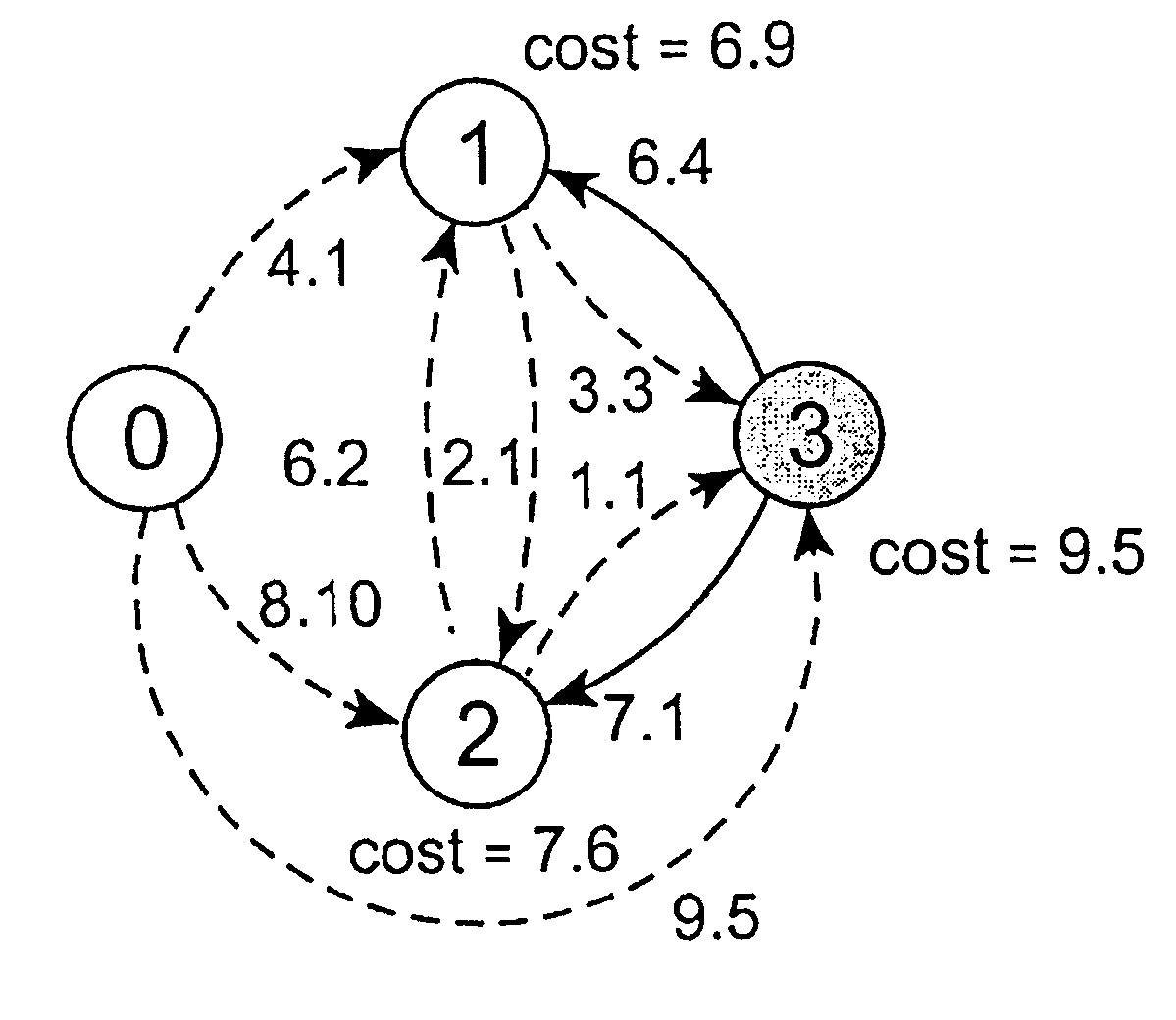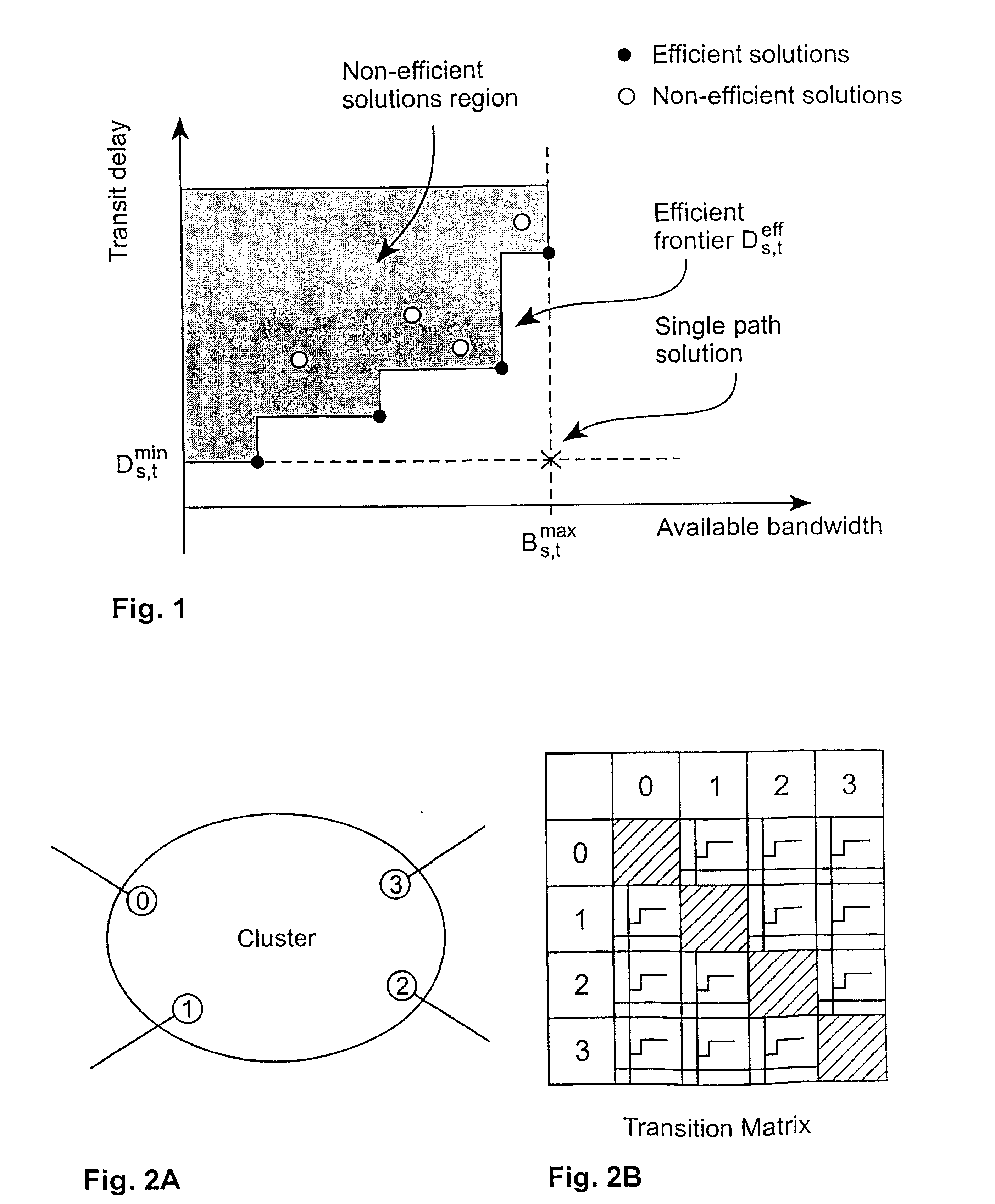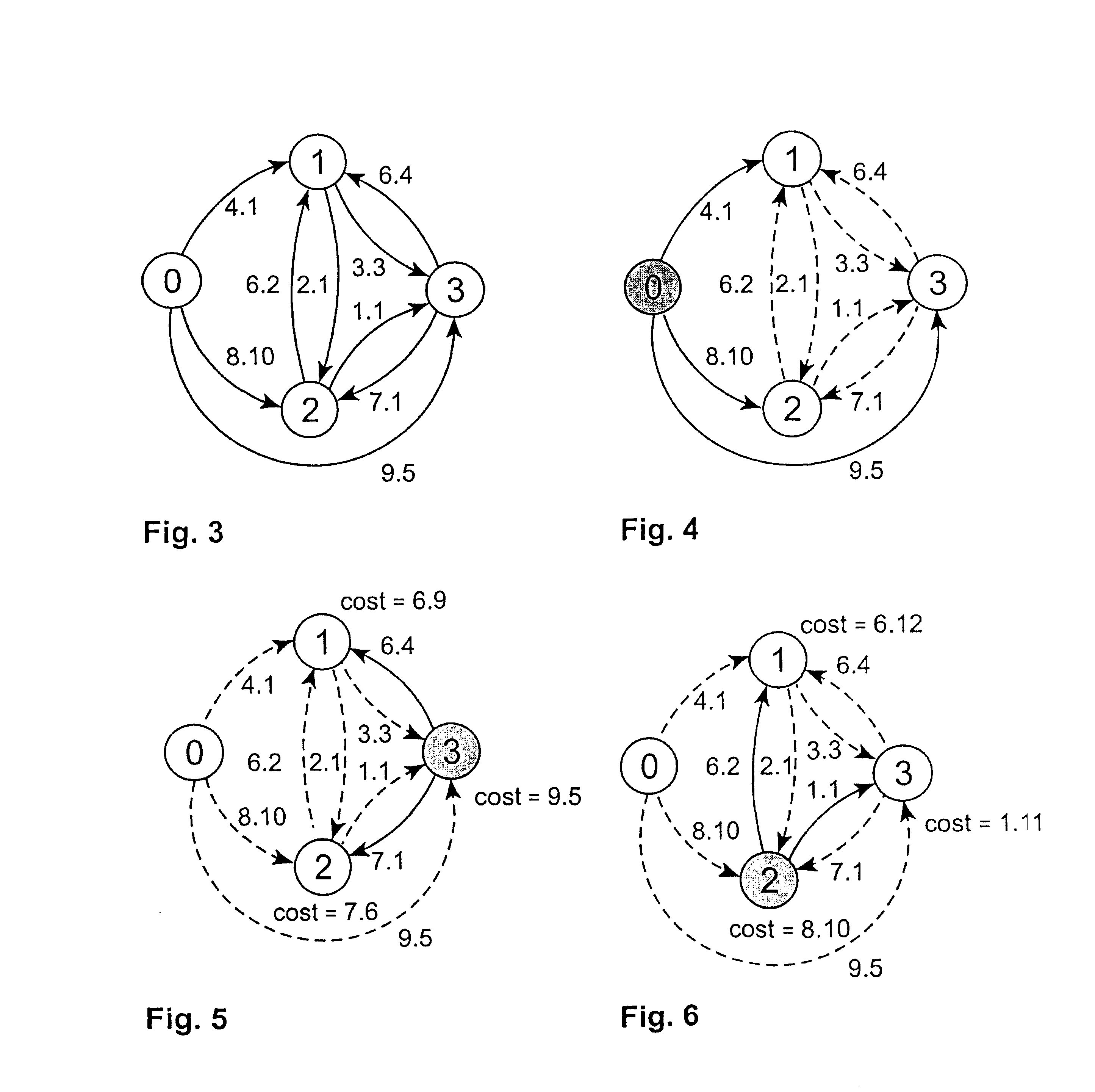Costs in data networks
a data network and cost technology, applied in the field of data network cost, can solve the problems of inability to achieve 24 d s, t min, and inability to achieve efficient frontiers from one node to all other nodes of a routing domain
- Summary
- Abstract
- Description
- Claims
- Application Information
AI Technical Summary
Benefits of technology
Problems solved by technology
Method used
Image
Examples
Embodiment Construction
[0137] Referring to FIG. 3, an example of a method embodying the present invention for determining the efficient frontiers from vertex 0 to remaining vertices 1, 2, and 3 of an example four node network will now be described. It will be appreciated that the present invention is equally to applicable to networks having more than or fewer than four nodes.
[0138] Step 1
[0139] Referring now to FIG. 4, the method starts from vertex 0 and considers all outgoing edges from vertex 0. Three edges provide connectivity to vertices 1, 2, and 3 respectively. There is no current cost associated with vertex 0. The costs of the corresponding edges to vertices 1, 2, and 3 are therefore inserted in the data set according to Rule 1d) above. 34 = { r 1 r 2 r 3 4 , 1 8 , 10 9 , 5 }
[0140] In the data set, the best cost in terms of bandwidth is to vertex 3: 9,5. This cost is then moved from the data set to the efficient frontier for vertex 3, according to rule 3b). 35 ={ r 1 r 2 r 3 4 , 1 8 , 10-} = { f 1 ...
PUM
 Login to View More
Login to View More Abstract
Description
Claims
Application Information
 Login to View More
Login to View More - R&D
- Intellectual Property
- Life Sciences
- Materials
- Tech Scout
- Unparalleled Data Quality
- Higher Quality Content
- 60% Fewer Hallucinations
Browse by: Latest US Patents, China's latest patents, Technical Efficacy Thesaurus, Application Domain, Technology Topic, Popular Technical Reports.
© 2025 PatSnap. All rights reserved.Legal|Privacy policy|Modern Slavery Act Transparency Statement|Sitemap|About US| Contact US: help@patsnap.com



